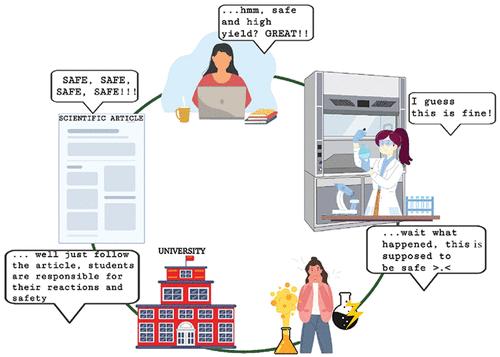How Should Journals Address a Procedure That Turns out to Be Dangerous?
IF 3.4
Q2 PUBLIC, ENVIRONMENTAL & OCCUPATIONAL HEALTH
引用次数: 0
Abstract
This Commentary critically evaluates scientific journals’ responsibility in addressing safety concerns within chemical research publications. We highlight the risks associated with uncritically accepting initial safety claims in the chemical literature, especially when such claims are later retracted or corrected. Our analysis focuses on three specific cases where procedures initially deemed safe necessitated significant safety corrections, and we emphasize the inadequate response of the publishing community to these updates. It is important to note that safety corrections often remain less visible and less cited than the original flawed publications. We scrutinize the mechanisms publishers employ for marking safety-related corrections and retractions and find them inconsistent and insufficiently visible to alert researchers, particularly trainees and those with less experience. We propose more effective strategies to enhance the clarity and prominence of safety information, including mandatory peer-review by chemical safety specialists and prominent watermarking of papers with safety corrections. We also advocate for authors and reviewers to use a safety checklist that includes detailed hazard identification, clear storage and handling instructions, and justification of hazardous reagents. Our Commentary underscores the shared responsibility across the scientific ecosystem in maintaining safety standards, advocating for a proactive role by journal publishers in protecting researchers from hazardous procedures and compounds, thus prioritizing safety in the publication of chemical research.

期刊应如何处理有危险的手术?
本评论批判性地评估了科学期刊在解决化学研究出版物中的安全问题方面的责任。我们强调了不加批判地接受化学文献中最初的安全声明所带来的风险,尤其是当这些声明后来被撤回或更正时。我们重点分析了三个具体案例,在这些案例中,最初被认为安全的程序必须进行重大的安全更正,我们强调了出版界对这些更新的反应不足。值得注意的是,与最初有缺陷的出版物相比,安全更正往往不那么引人注意,引用率也较低。我们仔细研究了出版商用于标记与安全相关的更正和撤稿的机制,发现这些机制并不一致,而且对于提醒研究人员,尤其是实习生和经验不足的研究人员来说,不够明显。我们提出了更有效的策略,以提高安全信息的清晰度和显著性,包括由化学安全专家进行强制性同行评审,以及在论文的显著位置标注安全更正水印。我们还提倡作者和审稿人使用安全检查表,其中包括详细的危险识别、清晰的储存和处理说明以及危险试剂的正当理由。我们的评论强调了整个科学生态系统在维护安全标准方面的共同责任,倡导期刊出版商在保护研究人员免受危险程序和化合物影响方面发挥积极作用,从而将化学研究的出版安全放在首位。
本文章由计算机程序翻译,如有差异,请以英文原文为准。
求助全文
约1分钟内获得全文
求助全文
来源期刊

ACS Chemical Health & Safety
PUBLIC, ENVIRONMENTAL & OCCUPATIONAL HEALTH-
CiteScore
3.10
自引率
20.00%
发文量
63
期刊介绍:
The Journal of Chemical Health and Safety focuses on news, information, and ideas relating to issues and advances in chemical health and safety. The Journal of Chemical Health and Safety covers up-to-the minute, in-depth views of safety issues ranging from OSHA and EPA regulations to the safe handling of hazardous waste, from the latest innovations in effective chemical hygiene practices to the courts'' most recent rulings on safety-related lawsuits. The Journal of Chemical Health and Safety presents real-world information that health, safety and environmental professionals and others responsible for the safety of their workplaces can put to use right away, identifying potential and developing safety concerns before they do real harm.
 求助内容:
求助内容: 应助结果提醒方式:
应助结果提醒方式:


